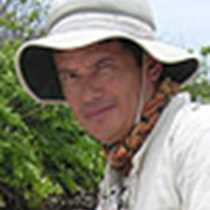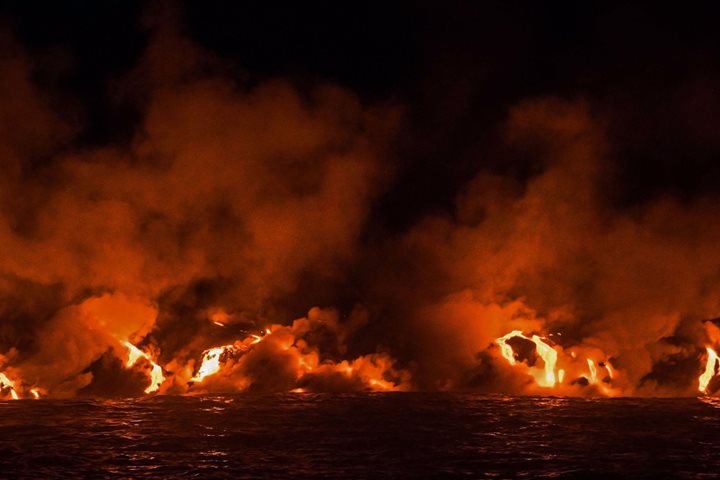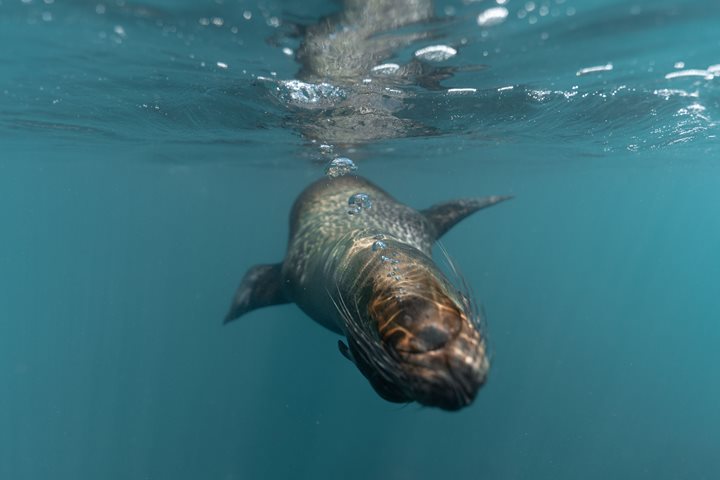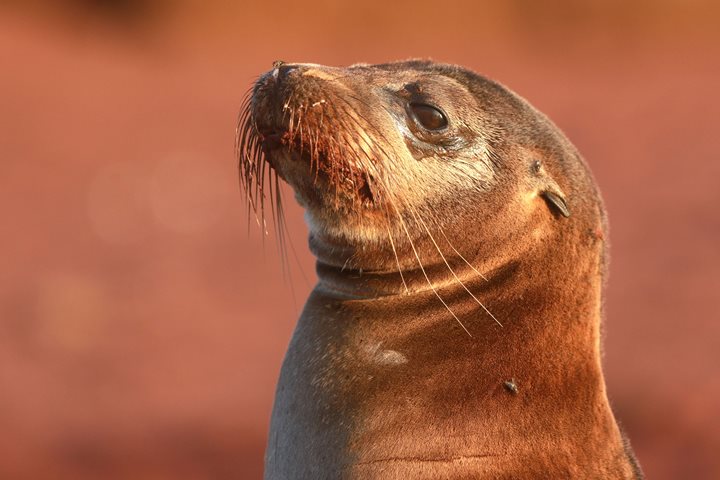We left behind Isabela and Fernandina Islands and early in the morning after a long navigation we finally arrived at Santiago (aka James) Island. With the first beams of sun our guests disembarked at Espumilla beach as high tide reached the upper part of the beach, flooding the small lagoon. We crossed the small forest of mangroves observing two Galapagos hawks in the trees, while along the shore of the lagoon phalaropes, sanderlings, white cheeked whimbrels and some plovers fed on small creatures living on the bottom of the shallow waters. Walking inland, finches and mockingbird fluttered among lush vegetation as they demonstrated their happiness at the arrival of the wet season in the archipelago.
Later in the morning the National Geographic Islander was repositioned in order to visit Buccaneer Cove. Here we took advantage of several activities- Zodiac rides, kayaking or deep water snorkeling. We started with kayakers and Zodiac riders who enjoyed the impressive shoreline and the gigantic cliffs while in the ocean blue footed boobies deftly tried to catch fish. The sun was warming up the ocean and it was time to return to discover the impressive underwater world. We saw golden eagle rays, white tipped reef sharks, surgeonfish, king angel fish, Moorish idols, parrotfish, snappers, grunts, Galápagos fur sea lions and many other species of reef fish.
In the afternoon we landed on the black volcanic sandy beach for a hike along the coast of James Bay, also known as Puerto Egas. Here we had the chance to walk along the coast where we found some interesting lava formations known as grottos where fur seals and sea lions lounged. There were different species of shore birds including plovers, sanderlings, ruddy turnstones, lots of marine iguanas, American oystercatchers, and much more. After witnessing an incredible sunset we headed back to the National Geographic Islander tired, but with incredible memories.







